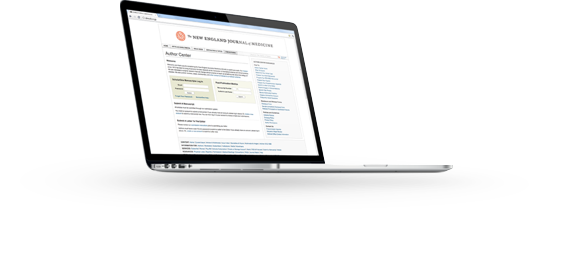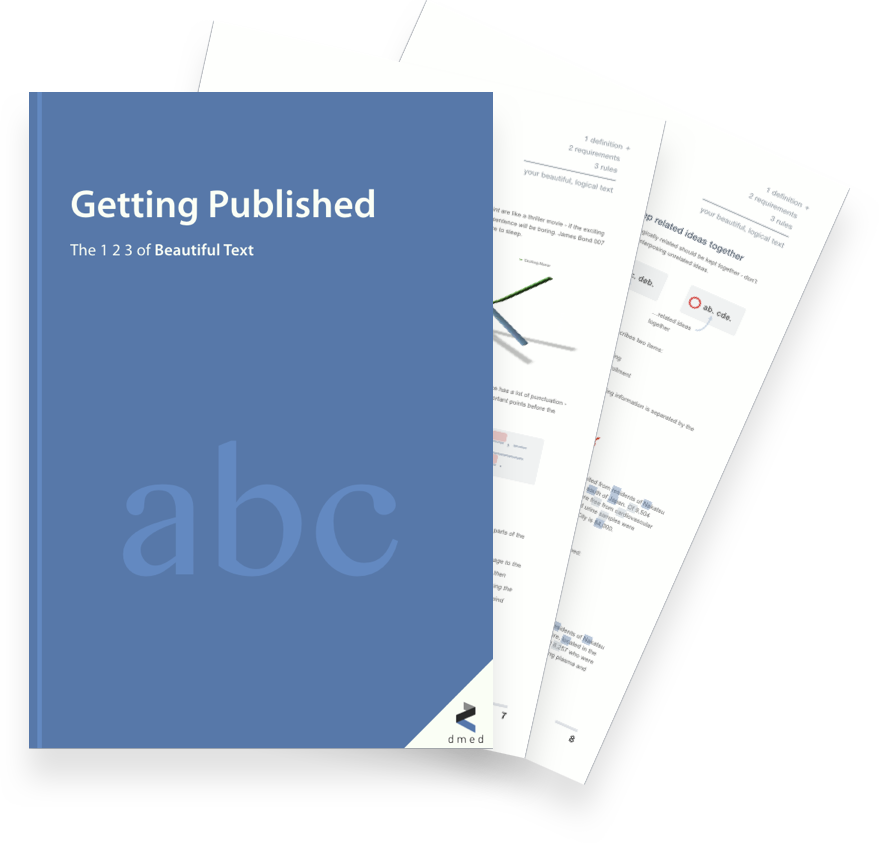Even papers with good science get rejected.
You need Paper Rescue, our ICU for rejected papers.
Paper Rescue is an intensive writing and editing process which gets your rejected paper published - even if you’ve had multiple rejections and harsh comments.
If your science is good, your paper can be rescued.

Three steps to rescue your paper
Refocus your ideas
“Our paper lost focus and we could not express what we wanted to say… the reviewers could not understand our message.”
Retell your story
“We did not clearly explain our study’s background, and what our study added…the reviewers could not appreciate our impact”
Rewrite your paper
“Our paper had a single-pass check by another company, but the reviewers said it was not well written.”
Refocus your ideas
Themes
Refocus on the core message of your study. Promote key ideas and demote or delete secondary ideas. Finally, structure ideas within a suitable paragraph structure.
Identify core message
Identify the core message of the research - the ideas you most wish to communicate. Mentally review their relationships with each other, and with secondardy ideas. Identify less important ideas for possible demotion or deletion.
Rightsize ideas
Correctly organize ideas within the Introduction, Methods, Results and Discussion sections. Ensure core ideas have priority. Demote less important ideas and ruthlessly delete those which distract from or are not strictly related to the core ideas.

Organize topics
Ensure a logical paragraph structure within each section. Each parapgraph should contain a logically related series of ideas, based around a single topic. Move any unrelated ideas to a different paragraph (or delete them).
Key sentence 1: “Here, to clarify X, we investigated Y using Z.”
Ensure hierarchy
Ensure paragraphs in each section follow the standard paragraph hierarchy of that section.
-
Introduction: What is hitherto unknown or incorrect, and what question your study addressed.
-
Materials: Time- or sequence-based description: first…, second…, finally…
-
Results: Reflects structure of Materials ie. time- or sequence-based.
-
Discussion: Begin with main findings and main implication of findings, followed by secondary findings, comparison and contrast with previous findings, strengths and limitations, and conclusion.
Retell your story
Introduction
Every sentence and paragraph must support the overall study - show why the study is important, how it was done, and what it means. Use global architecting to place information in optimum positions within the paper.
Present scientific problem
In the 1st paragraph of the Introduction, describe the current state of knowledge in your study’s field. Highlight the knowledge that is now missing or incorrect that your study investigated. Describe what benefits would accrue if the missing or wrong knowledge were known.
Key sentence 1: “A better understanding of this question would allow X and facilitate Y.”
Key sentence 2: “To our knowledge, however, no study has yet investigated this question”
Build intellectual puzzle
In the 2nd paragraph of the Introduction, build on the problem identified in the 1st. Identify the particular aspect of the problem your study specifically addresses. Highlight again what specific knowledge is missing, or incorrect, and describe what benefits would accrue if the missing or wrong knowledge were known. Repeat this process in 3rd and 4th paragraphs if your study has more than one main specific point.
Goal: Paragraphs 1 and 2 should bring the reader to an intellectual climax. At the end of paragraph 2, the reader should be thinking, ‘Yes, that is a big problem - how can we ever find a solution!’
Goal: The resolution of the climax is provided in the Hero sentence.
Announce the "Hero Sentence"
Begin paragraph 3 with a ‘Hero’ sentence to describe an intellectually satisfying resolution of the puzzle you built in paragraphs 1 and 2. Begin the Hero sentence with the 1st word “Here,” - this will announce your rescue of the reader from the puzzle - just like a superhero.
Key sentence 1: “Here, to clarify X, we investigated Y using Z.”
Discussion
The Discussion should focus on the significance and implications of the main and secondary findings - what they indicate in the broader context of current knowledge.
Restate main finding
The Discussion should begin with a three- to five-sentence paragraph which summarizes the main finding of the study, one or two secondary findings, and the significance or implications of the main finding.
Key sentence 1: "In this study, we found P... We also found Q and R."
Key sentence 2: "These findings indicate..."
Add paragraphs topic-by-topic
The second paragraph of the Discussion should provide additional detail on the first, and expand information on the main finding. Subsequent paragraphs should expand out to include other findings. Each paragraph should include a discussion on related findings from other papers, and the implications of your new findings. Begin each paragraph with a topic sentence, use a coherent pattern of organization, and link ideas together using suitable connecting words: 'Furthermore', 'However', 'In addition" etc.
Goal 1: The reader should be able to clearly see how each of the new findings relates to previous knowledge.
Goal 2: The reader should feel that the hypothesis, method and results of the study have advanced their knowledge of the field
Include Limitations section
Most papers need a paragraph on the limitations of the study. The typical pattern is: ‘Several limitations of the study warrant mention. First, X. Second, Y. Finally, Z.’ etc. For each limitation, you should try to place it in a suitable context, such as mitigate it: ‘Although Z was a limitation, it was not so important because of P and Q.’ Or limit it: 'Although Z was a limitation, the recent availability of new technology should provide a more conclusive answer.' Generally, you should be open about limitations - reviewers tend to be forgiving of limitations if openly expressed, but are severe if they discover limitations which you have kept hidden. Limitations are commonly written in a single paragraph, but some papers require as many as seven or more paragraphs to fully describe and explain the study's limitations.
Goal 1: No study is perfect. By openly and fully describing your limitations, readers will gain trust in your paper, and in you as a researcher.
Ensure meaning and impact of the Conclusion
Repeat your main finding at its most fundamental level. Restate the implications of the study findings - include your speculation here, if the findings warrant it. Suggest the next steps and followup studies your study points to.
Key sentence 1: "This study shows..."
Key sentence 2: "These findings indicate X, and may suggest Y"
Rewrite your manuscript
Text essentials
These three ideas - one definition and two essential requirements - are the foundation of good writing. Yet you have probably never heard of them before. For details, see our white paper, The Dmed Guide to Getting Published: The 1 2 3 of Beautiful Text.
The sentence as the primary unit of thought
In the same way that the meter is the primary unit of distance*, the sentence is the primary unit of thought. So one sentence should contain a single independent idea. You should write your sentences so that, at each full stop, the reader can mentally pause, digest the sentence's idea, and prepare for the next sentence's idea. Applied consistently through ought your paper, your text will be smooth and intellectually satisfying to read.
*the kilometer, centimeter etc are secondary units
Goal: Do not under- or overload your sentences, or combine unrelated ideas.
Hierarchy of values
The grammatical structure of a sentence should reflect the relative importance of the ideas it expresses. An important point should be in an important part of the sentence; a less important point should be in a less important part.
Goal: Grammatical sameness should reflect logical sameness
Economic expression
Express your ideas so that the reader can understand them using the minimum mental effort.
Goal: Charge your readers the minimum mental price.
Readability
Native-level readability may seem a tough call for non-native writers. But you can achieve highly readable text by following only three simple rules.
Main point at end
This is the most important rule of readability. Your reader expects you to place the main point of your sentence right at the end of the sentence, just before the period. Placing your main point in this position sends the reader a strong signal: 'This is the main point of this sentence, and this is what I want you to focus on.
Known before new
Place information the reader already knows before new information. This gives the reader a context in which to understand the new information.
Wrong: 'A causes B. C results from B'
Right: 'A causes B. B produces C.'
Keep related items together
Clumping related ideas together helps the reader see the connections between them, and process them more efficiently. Failure to do so makes the reader work hard to make the connections between items.
Wrong: 'We investigated A, B and X. We also investigated C and Y.'
Right: 'We investigated A, B and C. We also investigated X and Y.'
Paragraphs
Each paragraph should express an integrated and logically related series of thoughts. Each paragraph should read like a mini-story of its own, with an intellectually satisfying beginning, middle and end.
Unity
The paragraph should show a clear relationship between the main idea and supporting statements. Begin with a topic sentence which includes the paragraph's subject and its major idea. Then support, develop and explain the topic sentence with a series of sentences that logically follow from it. When necessary, end with a suitable summary or concluding sentence.
The topic sentence has two purposes:
- gives a context in which to place the following information.
- gives an idea of the nature of the paragraph - comparison and contrast, cause and effect, etc.
Organization
The paragraph should show a clear pattern according to the logic of the ideas expressed. If the paragraph describes a list of related items, these should be expressed in a clear list format, with grammatically similar expression and connectors such as 'First,... Second,... Finally,....' etc.
Common patterns include:
-
Comparison and contrast
-
Cause and effect
-
Time sequence
-
List
Coherence
Ensure a smooth progression between sentences by indicating the connection and relationships between ideas using appropriate connectors
Connectors include: Furthermore, however, in contrast, for example, nevertheless, additionally, importantly, notably,
Formatting
Readability may seem difficult to non-native writers. But there you can achieve highly readable text by following only three simple rules
General design and layout
An attractive, professional layout - logical, organised and consistent - suggests a logical paper.
Spelling
Always use your word processors Spelling Check function.
Tables and figures
Readers and reviewers often focus on the paper's figures and tables before reading the manuscript. Every figure and table should tell a clear and intellectually satisfying story - headed by an informative and logical title, with scientifically accurate axis labels.
Goal: The main story of each figure or table should be immediately clear to the reader. The reader should not have to go searching for the story.
Learn with Dmed
Dmed’s Learning Center provides step-by-step guides and videos to get you writing, presenting and publishing your research.

- The 1 2 3 of Beautiful Text
- Mastering ‘A’ and ‘The’
- Responding to Reviewers
Ready to get started?
or call 03-6459-1545
Mon-Fri 9:30-18:00
